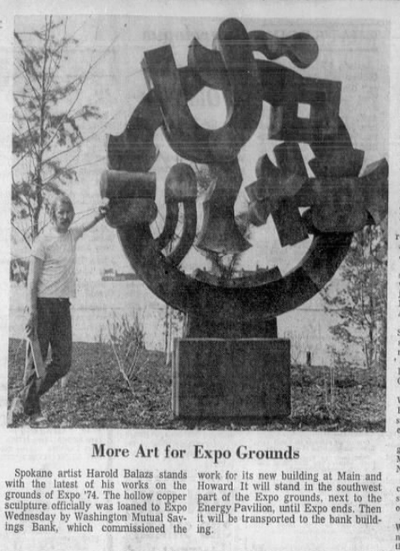50 years ago in Expo history: With just two weeks to go, fair prep was in full force – including work on a now-famous sculpture

With Expo ’74’s opening a little more than two weeks away, work was proceeding full tilt.
Two Plateau Indian longhouses were under construction above the banks of the Spokane River.
Artist Harold Balazs was putting the finishing touches on a hollow copper sculpture near the Energy Pavilion.
The U.S. Postal Service unveiled the Expo ’74 stamp, with a jaunty and colorful design by famous pop artist Peter Max.
Perhaps the biggest news was the announcement that “every last bit of open exhibit space on the Expo grounds” was full. Whitworth College claimed the final bit of space for its pavilion.
Jack Geraghty Jr., the Expo vice president for exhibits, said the final tally would be 10 national pavilions (including the U.S.), along with a large roster of corporate pavilions, including Bell Telephone, Eastman Kodak, General Motors and Ford. Several themed pavilions were also set, including the Energy Pavilion, the Joy of Living Pavilion, the American Forests Pavilion and the Afro-American Pavilion (sometimes called the Pan-African Pavilion).
From 100 years ago: The mystery deepened around the disappearance of salesman John L. Olson.
Detectives discovered that Olson had pawned his watch the day of his disappearance, strengthening the theory that he either died by suicide jumping in the Spokane River or that he left the city and was still alive.
The discovery tended to weaken the theory that he had been set upon by thugs and robbed. Olson’s suitcase and papers had been found scattered along the riverbank, giving rise to fears that he had either jumped in the river or been thrown in.